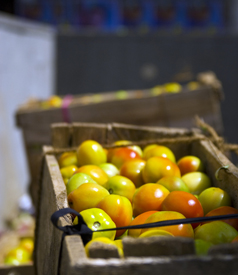Dani Rodrik is back, and he reignites an old debate with his recent blog post. He asks if high food prices are good or bad for poverty, and answers, “It depends on whether the poor are selling or buying, of course.” Citing a recent paper by Jacob Swinnen, he goes on, “High food prices benefit poor farmers who are net food sellers, and hurt poor food consumers in urban areas. Low food prices have the opposite effects. In each case, the net effect on poverty depends on the balance between these two effects.”
Seems obvious, but not so fast: What if the poor also work for wages and agricultural prices affect labor markets? Sandra Polaski and others have shown that when one incorporates labor market effects of high vs. low agricultural prices, high prices will clearly be better for many developing countries.
Now is the time to fight ignorance – help Truthout get the word out by donating here.
In her Carnegie Endowment report, “India’s Trade Policy Choices,” she and her co-authors use their innovative model to examine the effects of price increases and decreases for international prices for rice and wheat, both grown and consumed by Indian farmers. Their model is innovative because it incorporates labor market effects of policy reforms in ways that most other prevailing models – including the World Bank models cited by Rodrik in his earlier posts on the issue – do not. They punch a major hole in the “net buyer/net seller” analysis of food prices.
Carnegie finds that higher rice prices have positive overall poverty impacts, and lower prices have significant negative impacts on poverty, and that this is true even among many groups of urban consumers. Based on their modeling of a 25% decrease in world rice prices, they find: “Seventy-eight percent of households would experience real income losses from such a price change, and the distributional impact would be regressive, with the poorest households losing the most.” (p. viii)
In their chapter explaining their agricultural modeling, they explain why even the urban poor – net buyers all of them – experience losses from lower agricultural prices: “The likely channel through which the decrease in the price of rice affects poor urban households is the labor market. The drop in rice prices reduces demand for labor in rice production sharply, by almost 12 percent in the case of a 50 percent decline, and reduces overall demand for labor in the agricultural sector. Displaced rural laborers spill over into urban unskilled labor markets…. The incomes of illiterate workers in urban areas, typically the least skilled, decline.” (p. 29)
They conclude: “Adverse agricultural price shocks can have negative effects on poor urban households through labor market transmission, which can offset the gains they might realize as net consumers of agricultural products.”
Conversely, they find that when rice prices go up the overall impact is progressive. The demand for unskilled labor in agriculture goes up, which raises incomes, and raises wages not just in agriculture but generally across unskilled labor markets. The rural poor are the clear winners, earning higher prices for their crops and higher wages (or incomes) from their labor, even if they are net buyers of food. Some of the urban poor end up worse off, but some of their fellow net food buyers end up better off in spite of higher food prices. They are earning more for their labor.
Carnegie recognizes that this will play out differently from country to country, but the report’s conclusions for India are unequivocal: high prices for agricultural commodities are progressive and certainly preferable to low agricultural prices which hurt the poor the most.
George Dyer showed the same thing in some of his modeling related to higher corn prices in Mexico. Dyer modeled higher corn prices, looking only at rural areas, to examine the effects on net sellers and net buyers in rural Mexico. He found that the main source of income gains in rural Mexico came not from crop sales but from higher wage income. The negative effect of high prices on net food buyers was cushioned in the case of subsistence farmers, by higher wage income and some increase in their own production. (See my summary and reference, p 27.)
The models most commonly used (e.g., GTAP) often fail to capture these distinctions because they impose fixed constraints on employment. Carnegie, in its various Doha studies, showed just how important that can be. In the case of agriculture, it turns out to be critical, precisely because the rural and urban poor both depend on wage income, agricultural employment is significant and is strongly impacted by prices, and agricultural labor markets have an impact on urban labor markets.
What is perhaps most telling about the price increases of recent years is the negative impact of their extreme volatility. Both high and low prices have winners and losers, but volatility hurts everyone except the traders and speculators. Stable and remunerative prices should be the goal. That is what will attract investment into agriculture and bring long-term benefits beyond the short-run effects.
Join us in defending the truth before it’s too late
The future of independent journalism is uncertain, and the consequences of losing it are too grave to ignore. To ensure Truthout remains safe, strong, and free, we need to raise $43,000 in the next 6 days. Every dollar raised goes directly toward the costs of producing news you can trust.
Please give what you can — because by supporting us with a tax-deductible donation, you’re not just preserving a source of news, you’re helping to safeguard what’s left of our democracy.
